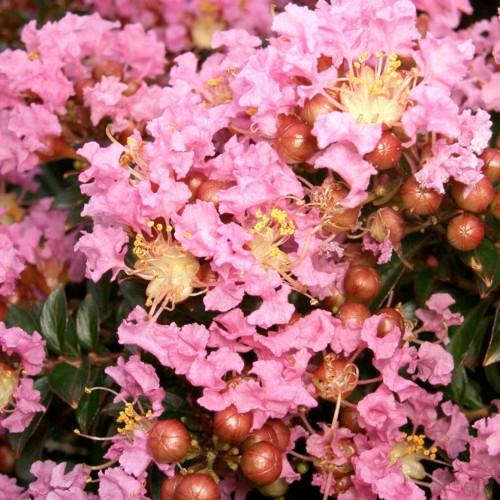
crape myrtle
Lagerstroemia 'Chickasaw'
Cycle:
Perennial
Watering:
Average
Hardiness Zone:
6 - 9
Flowers:
Flowers
Sun:
Full sun
Leaf:
Yes
Growth Rate:
High
Maintenance:
Moderate
Salt Tolerant:
Yes
Care Level:
Medium
watering
Crape myrtle (Lagerstroemia 'Chickasaw') is a fast-growing, drought-tolerant plant. Watering it on a regular basis is essential to healthy growth and vibrant blooms. For general care, water moderately throughout its growing season (typically March through October). Apply 1 inch of water per week, either all at once or broken up into smaller amounts. In summer months, water more frequently when temperatures and winds are especially hot and dry. It is important to allow the soil to mostly dry out between waterings. This crape myrtle prefers a slightly acidic soil, so a watering with acidified water (such as rainwater or collected water that has had a half cup of white vinegar added per 2 gallons of water) every 2-3 months is recommended. In the winter, when the plant is dormant, it does not require a regular watering schedule. However, if the soil appears overly dry, water lightly, checking the soil first to ensure that it is not soggy.
sunlight
Crape myrtle (Lagerstroemia 'Chickasaw') should receive about 6 to 8 hours of direct sunlight each day. The ideal times for sunlight are typically 10AM to 4PM. During the summer months, it is beneficial to provide morning light as well and shade during the hottest parts of the day to prevent the leaves from burning. In the winter months or in areas with less intense sunlight levels, crape myrtle should get full sunlight.
pruning
Crape myrtle (Lagerstroemia 'Chickasaw') should be pruned in late winter before new growth begins. Pruning should be limited to removing dead or damaged branches and thinning out the canopy to allow for improved air circulation. Begin pruning by removing any crossed or rubbing branches. If needed, lightly shape the tips of new shoots to encourage branching. Select a few of the tallest stems, remove any damaged ones, and then prune them back to a certain height. This will rejuvenate the plant and encourage new growth. It is important to not prune more than a third of the plant's growth in 1 season and to avoid excessive pruning of the oldest, largest stems.
